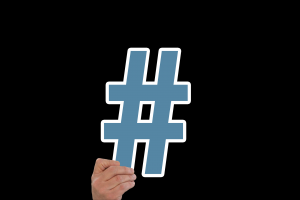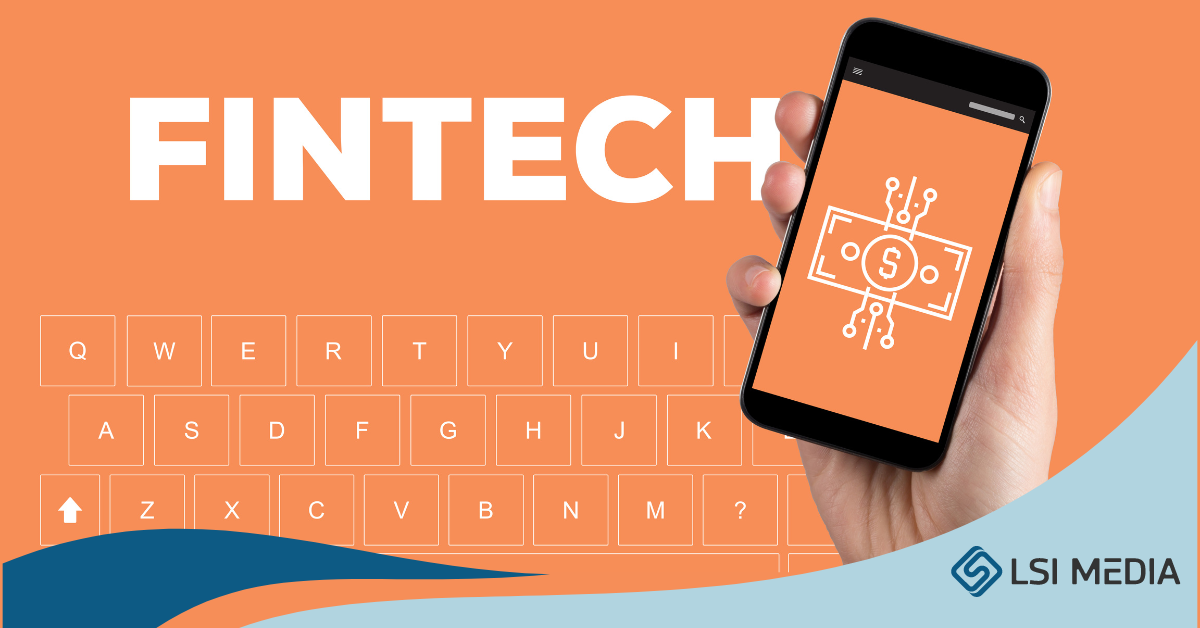[ez-toc]
2020 has been nothing less than a tumultuous year that changed the way we live and interact. Early this year, stay-at-home became mandatory across the globe. Consumers turned to social media to stay connected, informed, and entertained.
We are transitioning into what will become our next normal in 2021.
Here’s an in-depth look into emerging social media trends to the most popular media websites . This article will shape the way we engage, shop, and consume content. This can entrepreneur on how to use social media for small business or big companues. This will be your guide while embracing resilience amidst uncertainty.
-LSI Media
Social Media Trends Today
Over the last decade, social media has become an integral part of our lives and daily routines. Some of the popular platforms are Facebook, Instagram, and TikTok. They haven’t changed the way we interact with each other. They’ve changed the way we consume content online, including content marketing. The growth of social media turned it into the key channel for marketers. This media helped them to engage potential customers. Still, there is high competition and saturation of content online. This means that it can be difficult to stand out from the crowd.
The consistent evolution of smartphone technology fueled its growth. Social media is an endless stream of new fads, features, and platforms. There are an estimated 3.2 billion social media users worldwide. This number that’s reportedly growing by 100 million daily. It’s no surprise that new
social media trends are emerging, growing, and evolving every day.
Amongst the social media trends of 2020, we’ve seen the explosion of TikTok. It increased activism and support for political and social movements. Instagram Shops, not to mention the boom of UGC due to the global crisis. Long story short – if you want to stay ahead of the social media game remember one thing. You have to keep on top of the latest and greatest trends taking your socials by storm. Ready to spread your wings and become a social (media) butterfly?
Here are the biggest social media trends today.
It’s no surprise that social media video is the most engaging form of digital content online. Short-form video content has become a staple of our social feeds. This is due to the quick-fix nature of social media, Over the last year, big names such as MAC Cosmetics and the NBA have jumped on the TikTok trend. They made their brands more accessible. They also give customers a glimpse behind the scenes.
Many more are following suit, hot on the heels of the launch of Instagram Reels. Louis Vuitton and Sephora utilizing the short-form video feature. This is to promote their luxury fashion line. Short-form video is a trend that the global crisis amplified. It is easy-to-make, easy-to-watch. The number of people creating and consuming content on their phones increased. This is the effect of social distancing rules and the switch of employees working from home.
For brands and content creators alike, this trend should be top of mind over the next 12 months. “If you want to stay ahead of the game and front of mind. It’s crucial to jump on new features, like Reels for Instagram,”. Envato’s Digital Marketing Specialist, Madeleine Rochecouste says. “If Instagram is your main social media platform or if you create content regularly. You should consider creating or repurposing your content for Reels.
Instagram pushes and favors content creators who use Reels. They predominantly feature their Reels on the Instagram feed and explore page. The Reels is inside the Instagram app. It is also a huge indicator that Instagram wants it to be a success. It can be a huge advantage for a content creator to have all their content in one app. So if you can, it’s best to ride this wave in the early stages. This is to get some more exposure from Instagram for what you want to say, sell, or share with your community.”
The use of social media to drive e-commerce purchases is the next step for online shopping. Almost half of the world’s population now using social media, social commerce. Social commerce infiltrated our social media platforms over the last few years. The introduction of Facebook Shops and Instagram Shops is important. It suggests that social commerce will be big news in 2021. This goes along with the ongoing lockdowns around the world.
There’s no denying that shoppable posts are the way of the future. Brands can streamline their shopping experience across many channels. Platforms also allow consumers to buy while they scroll. “Back in the day, I always thought it’d be pretty cool to buy something you saw on the TV then. And therefrom the click of your remote. That is what social commerce allows,” says Madeleine.
“You’re already putting in the effort creating some epic content to sell your product. So why not add the functionality for your community to purchase it straight from the post? It’s so important to make your conversion funnel as frictionless as possible. So allowing potential customers to convert from your post can help reduce drop-offs. It may occur if they had to leave your post, find your website, navigate your website, find the product, and purchase from there.”
Our world revolves around technology. The augmented reality (AR) trend has started to impact social media big time. In fact, AR has become a staple of some of the most popular social networks globally. The introduction of new AR filters and AR technologies started it all.
Definition of Augmented Reality?
As opposed to virtual reality – which implies creating a whole new world from scratch. Augmented reality takes the real world and projects virtual augmentations. This computer-generated technology enhances our experience. Platforms like Facebook, Snapchat, and Instagram favored this. We’ve seen a big increase in both the quantity and quality of AR filters on social media. This is especially in the midst of the global crisis.
In-feed social media content continues to become more authentic and organic these days. It’s rare to see an Instagram Story not altered. These contents are usually enhanced with an extravagant AR filter or face-changing technology. AR filters have become so popular that Instagram now allows anyone. This includes brands, businesses, influencers, and even users. They create their own filters for others to use in their Stories.
Up-and-coming makeup artist Rowi Singh has released several AR Instagram filters. She used her unique makeup looks as inspiration. Fashion magazine Vogue even created its own Diamond Instagram filter. This is in honor of Vogue Australia’s 60th birthday. As technology continues to advance, we predict this trend to reach a whole new level. “The ability to interact on social media is what sets the medium apart from others. AR is the next evolution of that interaction,” says Envato’s Social Media Specialist Jo Burleson.
“AR technology allows you to superimpose digital interactive experiences over your view of the real world. Helping to bridge the online and offline worlds and provide a deeper experience. AR will allow users to interact with a product or brand on a much deeper level. This ranges from a marketing perspective than they usually might.
“For brands, Instagram Stories AR filters are a playful and interactive way. To build engagement and awareness. Bringing their brand or product into people’s everyday social experience. While Instagram Stories AR filters were introduced a while back. It’s only recently become possible for anyone to create their own AR filter with Spark AR Studio. So now that you can, why wouldn’t you?”
The small businesses and social media statistics are high these days. More businesses popping up on social media every day. There is an increase in users who are selective with the content they’re choosing to consume. As a result, many brands personalized their social media marketing strategies. This is to wow their target customers and stand out in the crowded social media space.
Definition of Personalized Marketing
Personalized marketing is nothing new. Its marketing tools and techniques are familiar to many marketers. It is important in the art of using consumer data to tailor your marketing to a target demographic. There is beauty in using social media for personalized marketing. It provides a deep well of data, information, and insights. All these leverage to engage audiences better.
These are different uses for social media channels;
-
To present individualized offers, ads, product suggestions,
-
To present tailored content based on demographics, previous purchases, or content preferences.
Many brands have taken full advantage of these personalizing capabilities, one of the best early examples of personalized marketing is Coca-Cola. It dominated social media with Coca-Cola’s famous 2015 #shareacoke campaign. The brand replaced its brand logo with consumer names. This encouraged people to share photos on social with the hashtag. It spread like wildfire. Coca-Cola is now set to relaunch the campaign this year with an increased focus on diversity.
In 2019, Spotify also released a personalized marketing campaign. Spotify Wrapped revealed individual listeners’ streaming trends. It also revealed music preferences from the previous decade. This approach proved to be very popular among Spotify users. It prompted millions of people to share their individual #2019Wrapped on social media.
There is an increasing amount of user data available on social media. Many brands are taking their personalized marketing even further. They created campaigns targeting specific groups of customers on social media. Lexus used social media data to run over 1000 different Facebook ads. It used a single campaign personalized to unique customer types. Cadbury ran a Facebook video campaign. It allowed users to create a personalized video. It used data pulled from their accounts.
Breast Cancer Now also took a similar approach. They did it with their personalized video marketing campaign. There’s no denying that personalization is incredibly effective. This is the social media marketing strategy and a trend that we predict to continue in 2021. “If you have not added a Facebook pixel to your website, I highly recommend you do so ASAP,” says Madeleine.
“Even if you’re not planning to run Facebook or Instagram ads right now. The pixel will allow you to build targeted audiences for future ads. Create remarketing campaigns based on the actions of your visitors on your website. This data is fundamental for building personalized ad campaigns. You can also use Facebook Analytics. You can get insights into your audience via the Facebook pixel. This can help you create great organic content for your social accounts.”
As a result, heaps of big-name brands are now going live:
-
Chipotle is using IG Live to share recipes.
-
Global Citizen is using IG Live to promote their #TogetheratHome campaign. This is In the wake of the global crisis.
-
MTV is going live on Instagram with their #AloneTogether jam sessions.
-
Makeup megastore Sephora has been using Facebook Live to stream live makeup tutorials.
-
NASA is using YouTube Live. It shows live stream news about scientific discovery and aeronautics research.
The high level of interaction is one of the main reasons why live video has become so popular. This is for both brands and individuals and the engagement that it generates. Live video has the highest rate of engagement of all content types. It allows audiences to not only engage. They can interact with their favorite people, brands, or businesses. This is through the use of social media in real-time.
This phenomenon was sure to have grown on its own. the live video trend has really taken off this year. People are craving interaction now more than ever. Despite the following events during 2020,
-
global crisis
-
environmental issues
-
social movements
“In 2020, consumers are watching more video than ever before. And now it’s all about going live! From Facebook Live and Tik Tok to Instagram Live & Instagram Reels, it’s proving to be the best way to capture the attention of your social audience,” says Jo. “It seems to make the audience feel more involved,” she continues. “As if they can influence or be a part of the action as opposed to passively watching it. It’s more at the moment and appeals to that deep need we have for instant gratification. And in a time when we’re surrounded by content, watching something live makes it seem as if you’re the first to find out. Which has got us all thinking, if it’s not ‘live,’ did it really happen?”.
Another benefit is that when a user goes live, there is a priority for content. Pushing it to the front of the queue. Instagram notifies followers and highlights their profile picture in the Stories section. It makes it appear first in line on their follower’s feeds.”
During 2020, there is an increase in social, political, and environmental issues. These issues include Black Lives Matter, Climate Change, Feminism, Covid-19, and many more. There’s been a big increase in the number of people advocating for these causes. Some opening up big conversations around mental health, social issues, and human rights.
As a result, many brands have also started standing up for what they believe in. They used social media and share content for good. Big brands Black Lives Matter movement. These brands are Reebok, Nike, and Netflix. Millions of people shared educational and inspirational content about the BLM movement.
In Australia, Ben & Jerry’s and Climate Council teamed up for the ‘Unfudge our Future’ campaign. A new range of products urging the Australian government to ditch fossil fuels. It also embraces renewable energy.
Even Instagram itself made big moves. It kept people informed, safe, and supported during the coronavirus pandemic. Social media has quickly become the primary way to spread awareness. It is also used to share content for good. It allows brands to reach many people with their positive message. Also creating an open dialogue by welcoming interaction and engagement from their audience.
“More than ever before, brands are voicing their opinions on important social issues. And taking the lead on conversations. And they’re using social media to do so,” says Jo. “Not only can you reach a lot of people through platforms like Instagram and FB. You can also have a two-way dialogue about the topic. It is essential to a commitment to be part of a ‘conversation.’
Whether it’s content on environmental sustainability or racial equality. A brand that creates content for good can become more memorable. It should have a defined position. It should be more mission-focused (or passionate about doing the right thing). It goes beyond being solely revenue-driven. But voicing an opinion doesn’t go very far without action to back it. If you’re going to share content for good, make it meaningful. You don’t want to add more noise than value.”
Today, it can be hard to scroll through social media without feeling like you’re the target of ads. In fact, the exposure of people to ads daily of an average person is between 6,000 and 10,000. It can be refreshing to see when companies actually admit what they are. Brands built to sell products. This is despite the following;
-
over-saturation of ‘purposeful’ brands
-
marketing on social media,
-
move toward more authentic content
People begin questioning authenticity more and more. self-aware advertising is now the latest and greatest marketing trend. It graces our social media feeds.
What is Self-Aware Marketing?
The ‘reverse psychology’ of the marketing industry, is self-aware marketing. It centered around satirical or ironic adverts. Adverts that poke fun at themselves, other brands, or its concept in general. Traditional marketing campaigns hide that they’re trying to promote products and sales. Self-aware marketing campaigns do the opposite by putting ‘the sell’ front and center.
For a few years, plenty of big brands familiarized themselves with self-aware marketing. The poster child for self-aware marketing is done right. In 2018, the Swedish oat milk brand Oatly caught consumers’ attention all over the world. There is a range of hilarious OOH posters, billboards, and social posts. A campaign poking fun at not themselves. They also poked at the concept of advertising in general.
Then in 2019, McDonald’s released a self-aware campaign. It promoted its Signature Burger Collection. A range of ‘posh’ burgers and ‘premium’ products served up on a silver platter (literally). It is a way to make fun of the brand’s cheap, fast-food reputation. In 2020, tons of brands started using self-aware marketing on their socials. This includes Marmite who points out the controversial nature of their product. Marketing your brand by making fun of it may seem counter-productive. The best self-aware marketing campaigns take the assumptions people have. They face them head-on – showing a level of authenticity. The transparency that consumers are craving more and more.
In Conclusion
Social media trends for 2021 and beyond are expected to continue evolving and shaping how we engage with online platforms. As technology advances and user preferences change, it is crucial for businesses and individuals to stay updated on the latest trends in order to effectively reach their target audience.
From augmented reality filters to short-form videos, social media platforms are constantly introducing new features to enhance the user experience. Additionally, the rise of influencer marketing and the emphasis on authenticity is significantly impacting the way brands connect with consumers.
It is becoming increasingly important for businesses to form genuine relationships with their audience and provide valuable content that resonates with them. Moreover, the shift towards private and niche communities is likely to continue, as people seek more personalized and meaningful interactions online. As social media becomes an integral part of our daily lives, it is important to navigate these trends and changes in order to effectively leverage these platforms for personal and professional growth.
Whether it is through visual storytelling, live streaming, or the use of interactive tools, social media will continue to play a significant role in shaping our digital landscape. As we enter the future, staying adaptable and open to embracing new trends will be crucial for success in the ever-changing world of social media.
FAQs:
1. What are the key social media trends for 2021?
The key social media trends for 2021 include the rise of short-form video content, the growth of social commerce, the increased importance of virtual and augmented reality, the emphasis on transparency and authenticity, the focus on personalized marketing, the expansion of messaging apps, the popularity of influencer marketing, the rise of ephemeral content, the adoption of voice-based search, and the emergence of niche social media platforms.
2. How will short-form video content impact social media in 2021?
Short-form video content, such as TikTok and Instagram Reels, is expected to continue its growth in 2021. It allows brands to create engaging and shareable content in a short amount of time, capturing the attention of the audience. Businesses can leverage this trend by creating entertaining and informative videos that resonate with their target audience.
3. What is social commerce and why is it important in 2021?
Social commerce refers to the integration of e-commerce within social media platforms. It allows users to discover and purchase products directly from social media posts. This trend is important in 2021 because it provides a seamless shopping experience for users and enables businesses to reach their target audience directly on social media platforms, increasing conversion rates and driving sales.
4. How will virtual and augmented reality impact social media in the coming years?
Virtual and augmented reality is expected to transform the social media landscape in the coming years. They offer immersive, interactive experiences to users, allowing them to engage with brands in new and exciting ways. This technology enables businesses to showcase their products and services in a more engaging manner, leading to increased brand awareness and customer engagement.
5. Why are transparency and authenticity important in social media marketing?
Transparency and authenticity have become increasingly important in social media marketing as consumers value genuine connections with brands. Being transparent and authentic helps build trust and credibility with the audience, leading to stronger relationships and increased brand loyalty. Businesses should focus on creating meaningful and authentic content that resonates with their target audience.
6. How can businesses personalize their marketing efforts on social media?
Businesses can personalize their marketing efforts on social media by leveraging data and insights to understand their target audience better. They can use this information to create tailored content, offer personalized recommendations, and deliver targeted advertisements. Personalization helps businesses connect with their audience on a deeper level and increase engagement and conversion rates.




























